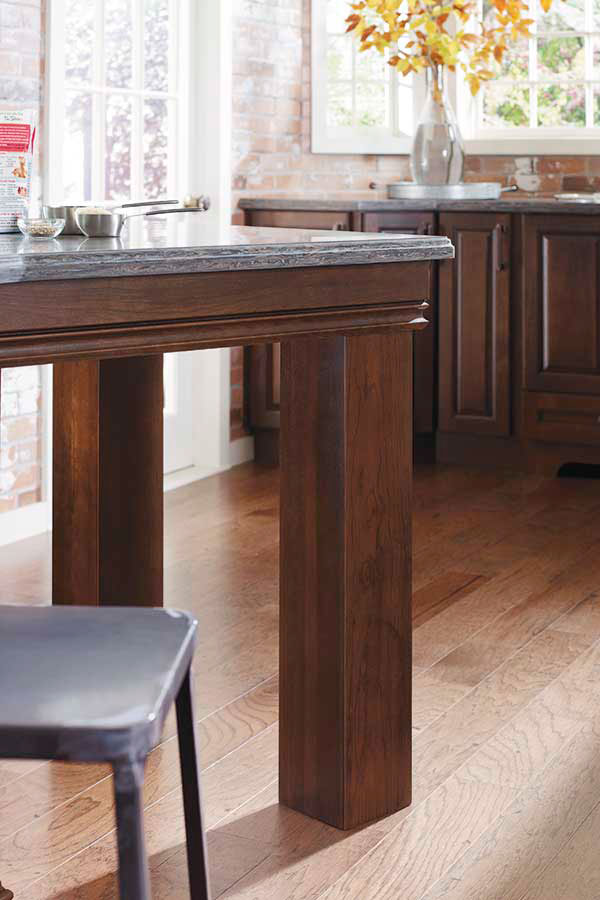A Guide to Picking the Perfect Legs For Cooking Area Island for Your Home
Choosing the ideal legs for your cooking area island is a nuanced choice that affects both the functionality and aesthetic appeal of this central room. Factors such as elevation, products, and style play a vital role in integrating your island with the overall kitchen area design. Additionally, understanding the significance of security and upkeep can considerably influence your option. As you consider these components, it ends up being evident that the appropriate legs can change not just the look of your cooking area but additionally its use for several years to find. What specific functions should you focus on in this selection process?

Understanding Kitchen Area Island Legs
When picking legs for a kitchen island, it's important to understand their useful and visual functions in the total layout. The legs serve as an important support group, guaranteeing security and durability for the island, which commonly operates as a workspace, dining area, or collecting area. The selection of product and construction technique must be durable enough to endure daily usage and possible wear.
In enhancement to their structural duties, legs add significantly to the island's visual charm. They can improve the cooking area's design, whether with typical, contemporary, or eclectic designs. The elevation and percentage of the legs are likewise essential factors to consider; they have to balance with the island's kitchen counter elevation while ensuring comfortable seating for those using the room.
Furthermore, the leg layout can affect the overall flow of the kitchen area. Open, airy leg designs can produce a feeling of lightness, while strong, significant legs might communicate a much more based and steady visual - Legs For Kitchen Island. Recognizing these useful and aesthetic facets will certainly direct home owners in making informed selections that match their cooking area's layout and improve its use
Popular Styles and Products
The selection of legs for a kitchen island incorporates a variety of prominent styles and products, each offering distinct characteristics that can boost both capability and looks. Typical legs generally exhibit ornate information and workmanship, improving classic cooking area styles.

Height and Security Factors To Consider

The legs of the cooking area island must give ample support, making certain that the framework can endure daily use without tottering or changing. Product selection plays a significant duty in security; steel legs, for circumstances, have a tendency to provide better stamina compared to timber.
Matching Your Kitchen Aesthetic
Selecting the right legs for your cooking area island goes beyond capability; it additionally plays a significant duty in the overall visual of the space (Legs For Kitchen Island). When selecting legs, think about the layout style of your kitchen.
Color is one more crucial factor. Legs that complement or comparison with your island's surface area and surrounding cabinets can produce visual harmony or striking focal points. For instance, coupling dark timber legs with a light marble kitchen counter can include deepness and passion. Additionally, consider the surface of the legs; matte, glossy, or distinctive surfaces can substantially influence the overall feel of the cooking area.
Installation and Upkeep Tips
Installing kitchen area island legs needs careful interest to information to description guarantee both security and visual appeal. Begin by selecting a suitable area for your island, guaranteeing it is degree and has ample room for motion. If you are connecting the legs to a wall surface or utilizing braces for added go to my site assistance, utilize a stud finder to situate wall studs. Mark the placement of the legs accurately prior to boring.
When securing the legs, use high-quality screws and, if required, wood glue for additional strength. For steel legs, make sure that you are making use of ideal anchors and devices to stop damage to your flooring. It is suggested to inspect for levelness after setup, making modifications as needed to avoid wobbling.
Maintenance is similarly important for long life - Legs For Kitchen Island. On a regular basis inspect the legs for any type of signs of wear or helping to loosen, specifically in high-traffic areas. Tidy the legs with a suitable cleaner, staying clear of abrasive materials that might scratch the surface. For wood legs, think about using a wood conditioner periodically to preserve their coating. By complying with these installment and maintenance pointers, you can make certain that your kitchen island legs remain both visually attractive and useful.
Final Thought
In final thought, picking the ideal legs for a cooking area island necessitates mindful consideration of height, stability, and visual compatibility. By choosing suitable materials and designs that align with the general kitchen design, capability can be boosted while maintaining aesthetic appeal. Proper setup and continuous maintenance further add to the toughness and long life of the kitchen island. Ultimately, thoughtful leg option plays an important duty in raising both the practicality and style of the kitchen area area.
When picking legs for a cooking area island, it's necessary to recognize their aesthetic and functional roles in the total design. Open, ventilated leg styles can develop a feeling of lightness, while solid, considerable legs may communicate an extra based and stable visual. The legs of the cooking area island need to offer ample assistance, ensuring that the framework can withstand daily usage without wobbling or changing.Installing cooking area island legs needs cautious attention to information to make certain both security and visual site allure.In conclusion, choosing the appropriate legs for a kitchen area island requires mindful consideration of height, security, and aesthetic compatibility.